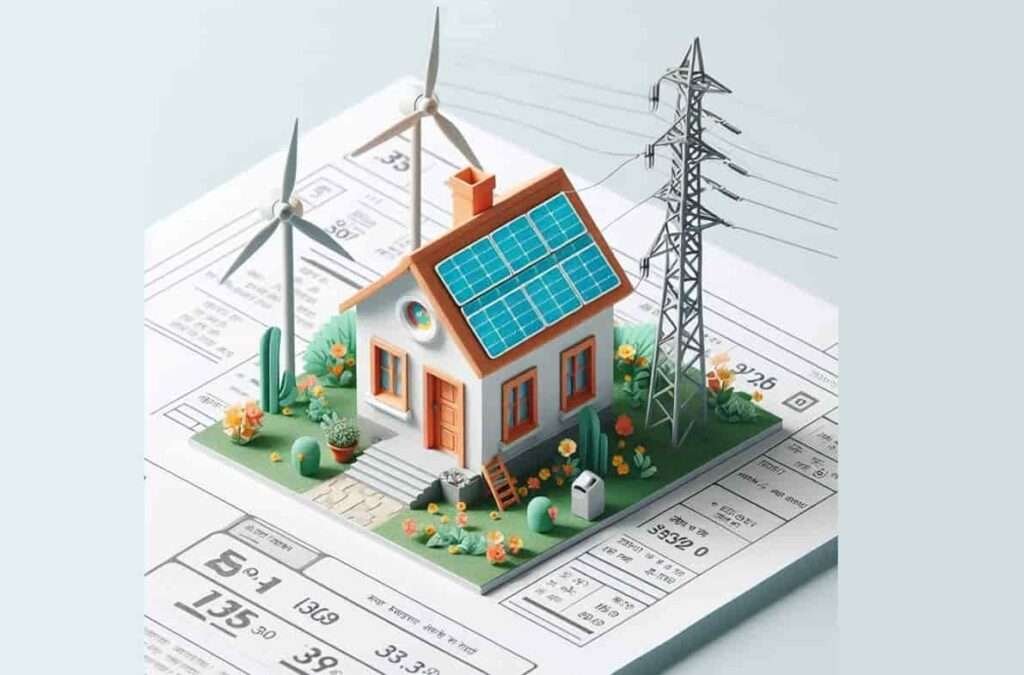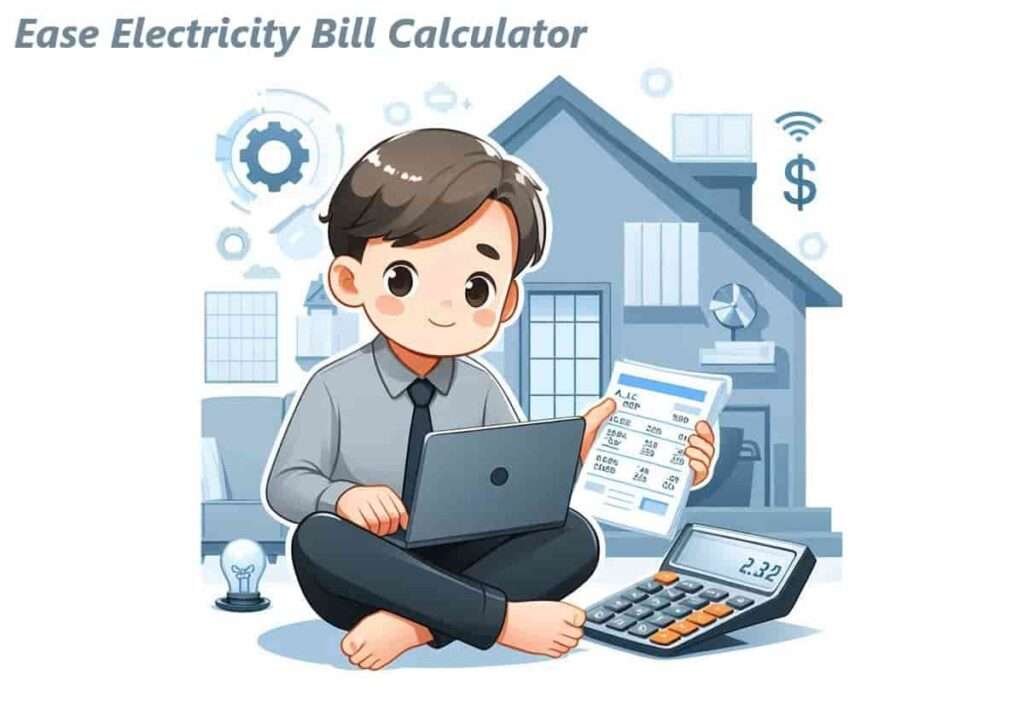During summer months, Many people are surprised when their electricity bills increase after adding just one appliance like a cooler, fan, or AC.
Yes, it seems not a big deal, but using electrical devices for long hours daily can quickly add up to a higher monthly bill. Usually, appliances like an AC and a cooler take the bill to the next level.
That’s why we created the Ease Electricity Bill Calculator, for those who love to play with numbers, or just want an estimated idea of their monthly and yearly electricity costs.
Whether you want to check the impact of a single device or your entire home setup, this calculator helps you find real results within a few clicks. Also, in this guide, we will learn how it works and how to use it properly –
Why You Should Care About the Electricity Cost Calculator
- Avoid Bill Surprises: Know what’s coming before it hits.
- Identify High-Consumption Devices: Track which appliances spike your bill.
- Budget Monthly Costs: Great for salaried and fixed-income users.
- Save Energy: Makes it easier to cut waste and also think before buying heavy-load stuff, such as an AC.
- Plan New Appliance Use:2 Add new gadgets without guesswork.
- No Login, No Ads: It is a clean, simple, and privacy-friendly non-subscription tool for you.
How Does the Electricity Billing System Work in India?

The electricity bill, also known as the Bijli or light bill, is your monthly statement from the electricity provider in India. It contains power consumed and charges due, often including taxes, surcharges, subsidies, and fixed fees.
In india, the electricity bill is a monthly charge based on the number of units (kWh) of electricity used by you. It is usually calculated by multiplying the number of units used by the per-unit rate specified by your state or city electricity board. Let’s break it down with additional costs:
- Your 1 unit of electricity is equal to 1 kilowatt-hour (kWh). In simple terms, it is using a 1000W appliance for 1 hour.
- Electricity Boards: Each Indian state has its own board department (for example, BSES, MSEB (Maharashtra ), TNEB for Tamil Nadu, DHBVN) with different slab rates.
- Slab System:
- 0–100 units: Low rate (often subsidised)
- 101–300 units: Moderate rate
- 301–500 units: Higher rate
- 500+ units: Highest rate
- Other Components: Fixed charges, meter rent, taxes, and fuel adjustment surcharge can also apply.
To better understand the Slab system, read this Delhi electricity traffic report.
Knowing your usage in units is the key to controlling your bill.
Understanding the Electricity Bill Calculator and features

An Ease Electricity Bill Calculator is an online web-based smart tool that lets you enter all your home appliances, usage hours, and unit rate to estimate your total bill without needing any login, subscription, or technical skill. It is designed by keeping indian user behaviour in mind.
What options can you use?
- Add multiple appliances (fan, AC, TV, cooler, Chargers, etc.)
- Input hours of usage, quantity, and power rating (watts)
- Select the electricity board or enter a custom per-unit rate
- Slab-based calculation support
- Monthly and yearly cost estimates
- No login, no subscription, completely free
- Supports 28, 30, or 31-day monthly cycles
- Printable output (just press Ctrl+P)
Who Benefits Most from a Bijli Cost Calculator?
- New renters or homeowners (like Nikhil)
- Families using multiple high-consumption appliances
- Working professionals monitoring bills in PGs/flats
- A person who looks for savings first before buying electronic appliances
- Students sharing hostels
- Finance-conscious households
- Environmentally aware users tracking their carbon footprint
So,
Let calculate your bilji bill easily –
- First, you visit the easemoney official site.
- Go to the menu, select Tools and choose EB bill calculator
- Now, start entering each appliance:
- Name (e.g., Air Cooler)
- Daily Usage (e.g., 10 hours)
- Power Rating in Watts (e.g., 190W)
- Quantity (e.g., 1)
- Choose your electricity board or enter a custom rate (default rate is ₹7/unit)
- Select usage days as per the total days in the month.
- The tool instantly shows total monthly and yearly estimates
- Hit Ctrl + P to print and save your record (Optional)
Estimate Watts per Appliance – Top Most Used Items in the home
| Appliance List | Approx. Wattage |
|---|---|
| LED TV (32″) | 60 W |
| Ceiling Fan | 50 W – 75 W |
| Air Conditioner | 1500 W – 2000 W |
| Refrigerator | 150 W – 250 W |
| Induction Cooktop | 1000 W – 2000 W |
| Cooler | 190 W – 250 W |
| Washing Machine | 500 W – 1000 W |
| Mixer Grinder | 500 W |
| Geyser | 1,500 W – 3,000W |
| Laptop | 60 W – 90 W |
| Tube Light/LED | 9W – 40 W |
Top 15 Electricity Boards Supported by our Ease Bijli Calculator
- APDCL (Assam)
- BESCOM (Karnataka)
- CESC (West Bengal)
- DHBVN (Haryana)
- KSEB (Kerala)
- MPMKVVCL (Madhya Pradesh)
- MSEDCL (Maharashtra)
- NBPDCL (Bihar)
- PGVCL (Gujarat)
- PSPCL (Punjab)
- TNEB & TANGEDCO (Tamil Nadu)
- TSSPDCL (Telangana)
- UHBVN (Haryana)
- UPPCL (Uttar Pradesh)
- Custom Range (You can use any Electric board rate here)
What Formula Works for Calculating Manually?
If you decide to calculate your monthly light bill by a pen hand a paper, here is the formula you can use with a real-life example in india –
- Monthly Units = (Watt × Hours per Day × Days × Quantity) ÷ 1000
- Monthly Cost = Monthly Units × Per Unit Rate
- Yearly Cost = Monthly Cost × 12
Here is an Example –
Let’s talk about Nikhil’s Cooler example for better understanding:
- Power: 190 watts
- Usage: 10 hours/day
- Quantity: 1
- Days: 30
- Per Unit Rate: ₹7
Units: (190 × 10 × 30) ÷ 1000 = 57 units/month
Bill: 57 × ₹7 = ₹399/month Yearly: ₹399 × 12 = ₹4788/year
Real-Life Expert Tips from Nanne Parmar (Finance Expert, Google Scholar)
- Always Check Power Ratings: Never assume low wattage — verify before using.
- Better BEE Ratings: Always purchase 5-star ratings electronic stuff, such as AC, Fridge, and Cooler, for better power savings.
- Use Appliances in Off-Peak Hours: Some boards offer cheaper night rates.
- Replace Old Devices: Newer tech is often 30–60% more efficient.
- Unplug When Idle: Phantom load from standby mode can add ₹100s per month.
- Switch to LED & Inverter Tech: They reduce consumption drastically.
- Track Weekly, Not Monthly: Spot unusual spikes before they cost you.
Additional FAQs
What is 1 unit in an Electricity bill?
The 1 Unit means just 1 KWH (kilowatt-hour), the energy used by a 1000-watt appliance running for 1 hour. For example, a 100-watt bulb running for 10 hours equals 1 unit.
How can I calculate the electricity cost for 1000 units?
Multiply 1000 units by your electricity board’s per-unit rate. If the rate is ₹7, your bill is ₹7000. Also, don’t forget to include other fixed charges and taxes if applicable in your indian state.
Is the Adani electricity bill calculator different?
Adani’s calculator is based on their own tariff slabs, which can slightly differ from other boards. However, core logic remains the same: units consumed × rate per slab + fixed charges.
What is kWh in the electricity bill calculator?
kWh stands for kilowatt-hour. It is used to measure how electricity consumption.
How to calculate the electricity bill of an AC?
Check your AC’s wattage (say 1500W), multiply by how many hours you use per day (e.g. 6), and by days (30). Divide by 1000 to get units, then multiply by the rate. That’s your monthly AC cost.
Do all appliances use the same rate per unit?
No, all appliance works on different watts. Electricity is charged slab-wise. Lower usage (0–100 units) gets a cheaper rate, but higher usage gets costly. Your geyser and fridge may run under different slabs on the same bill.
How does an electricity board affect my bill?
Each board (like Adani, BSES, TNEB, UPPCL) has different rates and fixed charges. So the same 200 units might cost ₹1,000 in one state and ₹1,400 in another. Location truly matters.
What is a good monthly usage for a 2BHK home?
A typical 2BHK using fans, lights, TV, and 1 AC might use 250–400 units monthly. Actual usage depends on habits, appliance ratings, and how energy-conscious the family is.
How to calculate the electricity bill from the meter reading?
It is quite easy; you have to subtract the previous month’s reading from the current one to get total units used. Multiply the units by your slab-wise rates, then add fixed charges, taxes, and other fees shown in your bill.
How to calculate fixed charges in the electricity bill?
Fixed charges depend on your load (in kW) and your electricity board’s rates. For example, if your load is 2kW and the rate is ₹50/kW, then the fixed charge = 2 × 50 = ₹100.
How to calculate the electricity bill in Delhi?
Delhi uses slab-based billing (0–200, 201–400, etc.) with subsidies. Use units consumed and apply Delhi Electricity Board slab rates. Then add fixed charges, PPAC, and subtract subsidies if eligible to get the final bill.
How to calculate MDI in the electricity bill?
MDI (Maximum Demand Indicator) shows peak usage in kW or kVA during the billing cycle. Commercial users may be charged for MDI if it exceeds sanctioned demand. It’s found in the meter and the bill.